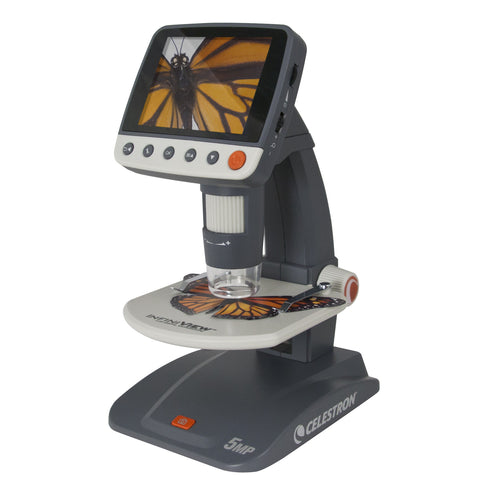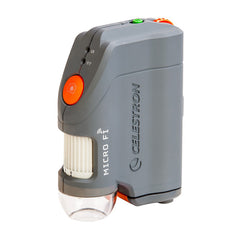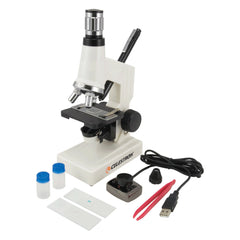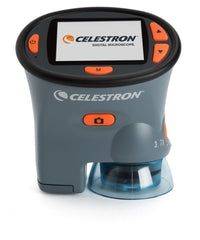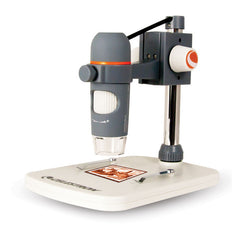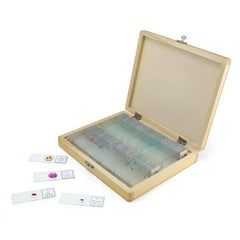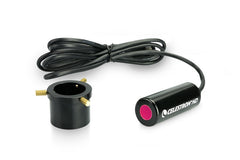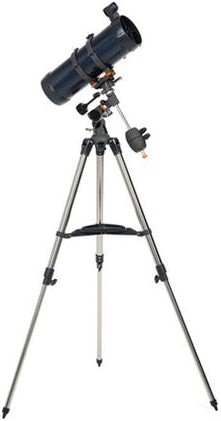Celestron Infiniview LCD Digital Microscope - 44360
Shop Microscopes by Type:
Shop Microscopes by Brand
Shop Microscope Accessories:
Microscope Buying Guide
From a handheld digital microscope you can take anywhere to a top-of-the-line compound microscope fit for a leading research lab, microscopes come in many shapes, sizes, and price points. In this short guide, we take you through the basic microscope designs so you can make a more informed buying decision.
Digital Microscopes - These compact, affordable microscopes have taken the scientific world by storm. Rather than a traditional eyepiece, these microscopes feature imaging sensors so you can view specimens on your computer screen, a classroom projector, or even an integrated LCD screen on the microscope body. Digital technology is available in both low-power microscopes (suited to detail work like examining stamps) or high-power models with magnification up to 1000x and above for viewing specimens on slides.
Handheld Microscopes - This popular category of digital microscope is a handy, all-in-one unit that you can take anywhere. Most handheld microscopes plug into the USB port on your laptop for on-the-go viewing. Some offer other high-tech features like a built-in screen or even WiFi so you can view specimens on your smartphone or tablet. The type of microscope you choose depends mainly on where and how you'll use it. You may want to consider one with a SD memory card slot so you can save images and videos of your discoveries. Handheld microscopes are designed for low-power observation.
Compound Microscopes or Biological Microscopes - These traditional laboratory microscopes are the most popular for examining cells or other specimens on microscope slides. Biological microscopes are available at just about every price point, from kid-friendly microscope kits to high powered scientific instruments with all the bells and whistles. Remember, if you want to turn any compound microscope into a digital one, you can add one of the many microscope camera attachments featured here on TelescopesPlus.com.
Stereo Microscopes - If you'll be spending hours at the eyepiece, you might want to upgrade from a compound microscope to a stereo microscope. With a stereo microscope, you can view with both eyes. Under low magnification, a stereo microscope gives specimens a 3D viewing effect, perfect for detail work. High power stereo microscopes don't offer the same 3D experience, but they are significantly more comfortable and easier on the eyes than traditional microscopes.

